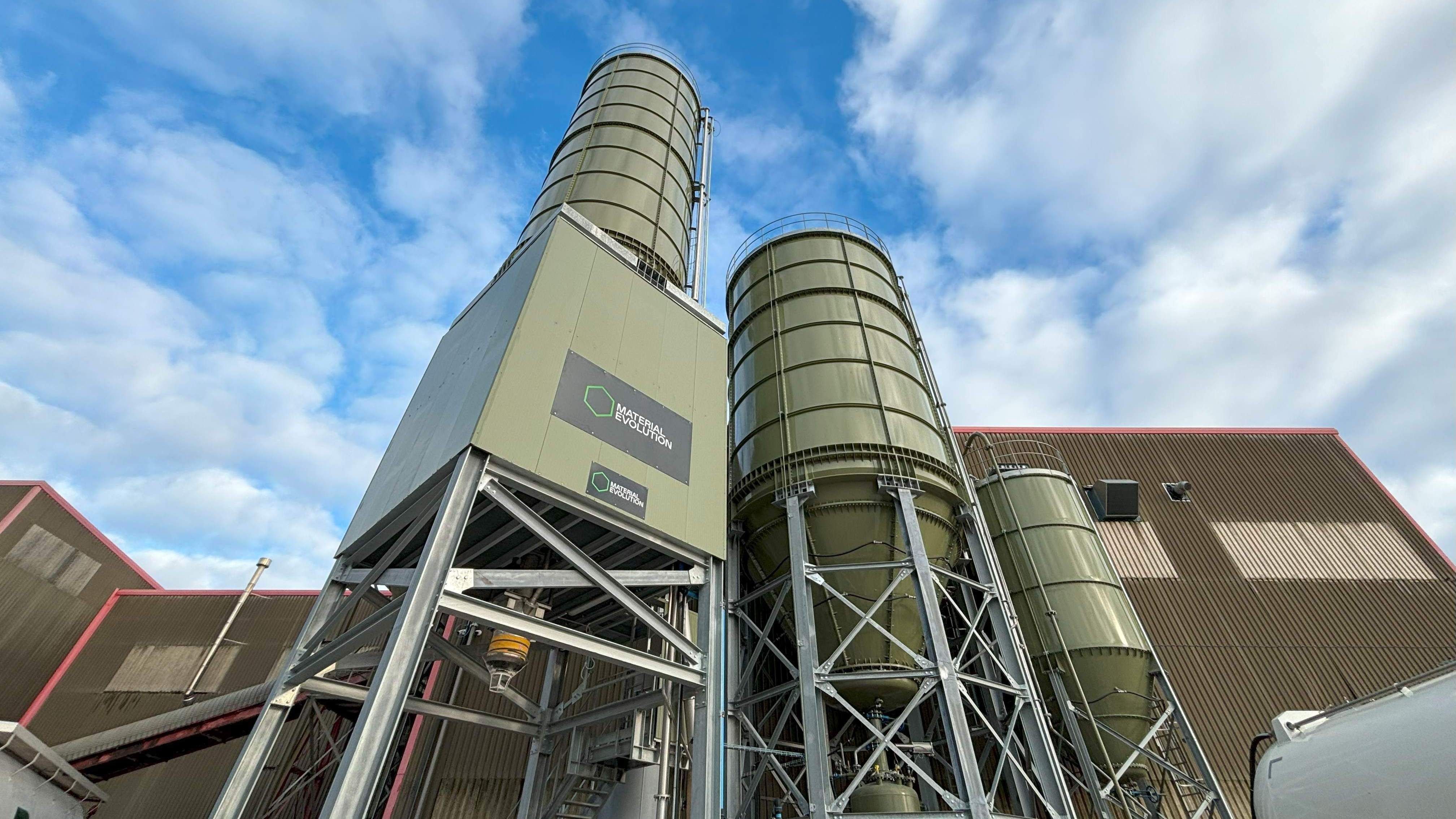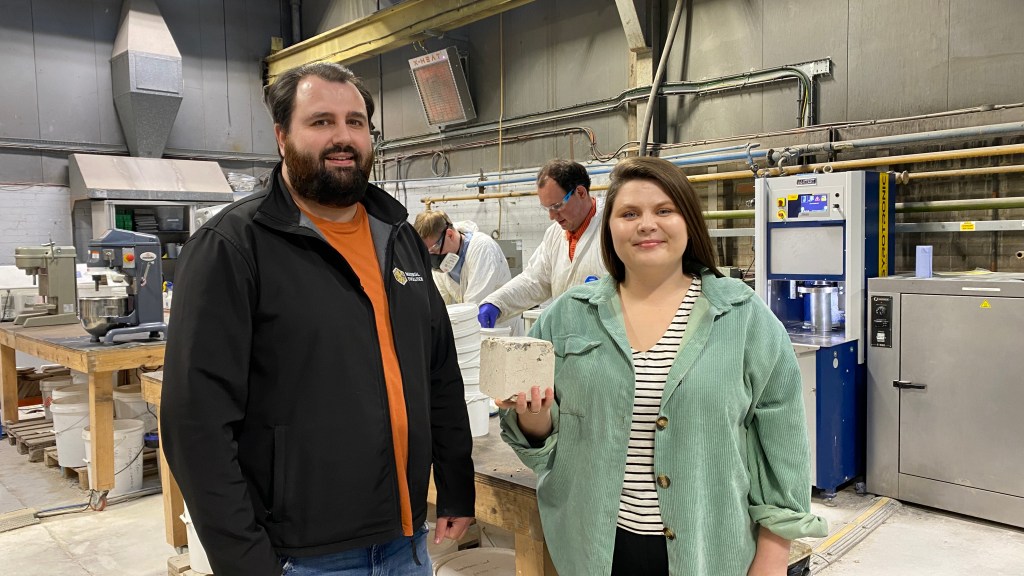Innovators in Sustainable Cement: A Revolutionary Approach
Cement may not be the most glamorous subject, but Liz Gilligan describes her passion for it as a true “love affair”.
Despite her fondness, this relationship is fraught with complexity. Gilligan has been environmentally conscious since childhood—so much so that she decided to stop eating meat, telling her butcher father. Pursuing her education, she enrolled at Queen’s University Belfast to earn a PhD focused on sustainable architecture.
During her studies, she came to understand that cement serves as the essential component in modern construction while simultaneously being a major environmental challenge. The world consumes more cement than any other material besides water, with a staggering four billion tonnes produced annually, contributing to 7.5% of global carbon emissions, a figure that surpasses that of the aviation sector.
Gilligan initially assumed that the construction industry was actively creating low-carbon alternatives to traditional cement. “I thought, given the scale of this issue, surely someone is working on a solution,” she recalls. However, when she couldn’t find anyone, she felt compelled to take matters into her own hands.
Entrepreneurship wasn’t on her radar at first. “When others talked about wanting to become founders, I didn’t even understand what it meant,” she confesses.
However, coming from a family of nine, with the last six being adopted, she embraced a mindset of ‘just get on with it, make things happen, everything is solvable.’ This outlook, she believes, naturally led her towards entrepreneurship.
Instead of accepting an accelerated path to a professorship, Gilligan co-founded Material Evolution, a sustainable cement startup, alongside former royal security advisor Sam Clark. The company was established in January 2020, with Gilligan serving as the CEO and Clark as COO.

Since its inception, Material Evolution has made considerable progress, creating a type of cement that is 85% less polluting than conventional Portland cement and securing £15 million in funding from investors like SigmaRoc. This investment allowed them to construct a plant in Wrexham with the capacity to produce 120,000 tonnes annually, which completed its initial production batch in October.
One of their significant challenges is persuading construction firms to invest in a pricier low-carbon solution. However, their ability to innovate in a sector that has seen little change over the past 200 years positions them as industry pioneers, particularly in an area often viewed as a major carbon emitter.
The cement sector is notably challenging to decarbonize, as its emissions are not simply mitigated by transitioning to cleaner energy sources. While fossil fuels are used to heat massive kilns to 1,400°C for processing limestone into the key cement ingredient calcium oxide, most emissions arise from carbon dioxide released during limestone breakdown.
Material Evolution has circumvented such emissions utilizing a method called alkali fusion that operates at lower temperatures and abstains from using limestone. Their cement is derived from blast furnace slag, reacted with alkali chemicals in a reactor. This mixture forms a powder that behaves like standard cement when water is added, with their only carbon emissions resulting from supply chain processes and energy use.
The cement produced by Material Evolution complies with the newly introduced regulatory standards for low-carbon cement, established by the Institute of Civil Engineers in September, allowing it to be utilized in construction projects. Looking ahead, the company aims to incorporate various other waste products, such as mining tailings, into their processes, promoting sustainability without depleting natural resources.
Despite the progress, the journey towards greatly reducing the industry’s ecological footprint is far from over. Although their Wrexham facility stands as the UK’s largest low-carbon cement plant, the country consumes 15 million tonnes of cement each year. Gilligan hopes to establish a plant capable of producing at least half a million tonnes by 2028, planning not to compete with major players like Heidelberg, Cemex, and Tarmac, but rather to collaborate with them.
She anticipates that these large corporations, facing stringent net-zero targets and potential carbon tax hikes, will no longer invest in traditional cement production facilities in Europe.
“We’re not looking to establish every factory ourselves. In the next few months, we’ll have exciting partnerships with the leading five cement manufacturers,” she states.
As part of their strategy, SigmaRoc’s subsidiary CCP Building Products has established its operations alongside Material Evolution’s Wrexham facility, with intentions to produce concrete using Gilligan’s cement. However, she refrains from disclosing specific sales figures or financial agreements.
While she mentions that her product is less expensive than the £450 per tonne incurred by alternative low-carbon cement methods involving carbon capture, it still represents a significant premium over the £130 per tonne price point associated with Portland cement. Gilligan is optimistic that as production scales, price parity with Portland cement could be achieved within five years.
Construction companies are increasingly seeking low-carbon materials to meet sustainable building contracts, with the UK government’s upcoming Future Homes Standard set to boost demand for eco-friendly building resources.
Gilligan asserts that if construction firms were accountable for the full expenses linked to their carbon emissions, “we would already be at cost parity. Our primary focus at Material Evolution is to continue reducing our production costs. That is our most significant goal.”




Post Comment